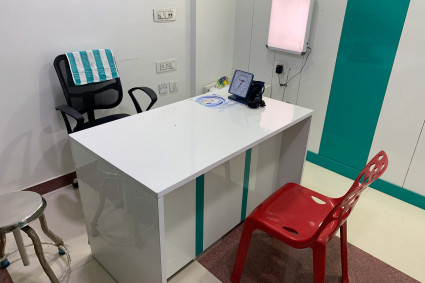
The battle against cancer rages on, and the arsenal of weapons used in this fight is constantly evolving. One of the key tools in the oncologist's toolkit is the xenograft mouse model, a remarkable experimental system that has significantly advanced our understanding of cancer and its progression. Within this framework, a particular aspect, the tumor microenvironment, has emerged as a pivotal player in the complex interplay of cancer growth and spread. In this blog, we will explore the significance of the tumor microenvironment in xenograft models and its profound implications for cancer research. We will also introduce you to Theraindx, a pioneering company specializing in xenograft mouse models in India.
Unpacking Xenograft Mouse Models
Before we delve into the intricacies of the tumor microenvironment, let's first understand what xenograft mouse models are and how they are used in cancer research.
Xenograft models involve the transplantation of human cancer cells or tissues into immunodeficient mice. These mice are specifically bred or genetically modified to have compromised immune systems, allowing human cancer cells to grow within them without immediate rejection. This model serves as a bridge between the laboratory and the human body, enabling researchers to study cancer growth, treatment responses, and the intricacies of tumor biology in a controlled environment.
Xenograft models are invaluable tools in cancer research, offering a closer approximation of human cancer biology compared to traditional in vitro methods. They provide insights into tumor behavior, the effectiveness of potential therapies, and the factors influencing cancer progression. Moreover, they allow researchers to investigate the critical role played by the tumor microenvironment in shaping the fate of cancer cells.
The Tumor Microenvironment: A Crucial Player
In the world of cancer biology, it's not just the cancer cells themselves that matter; it's also the environment in which they reside. This environment, known as the tumor microenvironment, consists of a complex interplay of various cell types, extracellular matrix, and signaling molecules. It can either support or inhibit cancer progression, depending on its composition and characteristics.
Tumor microenvironments vary significantly among different cancer types and even between individual patients. The key components of the tumor microenvironment include cancer-associated fibroblasts, immune cells, blood vessels, and extracellular matrix proteins. Understanding how these components interact with cancer cells is critical in developing effective therapies.
Xenograft Models Unmask the Tumor Microenvironment's Secrets
Xenograft models are the perfect platform to dissect the intricacies of the tumor microenvironment. When human cancer cells are introduced into the immunodeficient mice, they not only form tumors but also recreate aspects of the human tumor microenvironment. This allows researchers to study the interplay between cancer cells and their surroundings.
Studies using xenograft models have uncovered several critical aspects of the tumor microenvironment:
Immune Cells: In many cancer types, the presence of immune cells in the tumor microenvironment can either facilitate or inhibit tumor growth. Understanding these dynamics can lead to innovative immunotherapies.
Blood Vessels: Tumors need a blood supply to thrive. Xenograft models have provided insights into the formation of new blood vessels in the tumor microenvironment, a process called angiogenesis, which is essential for tumor growth.
Extracellular Matrix: The extracellular matrix provides structural support for tissues and plays a role in cell signaling. In the tumor microenvironment, changes in the extracellular matrix can impact cancer cell behavior.
Cancer-Associated Fibroblasts: These cells are often found in the tumor microenvironment and can promote cancer growth and progression. Xenograft models have helped elucidate their role in cancer development.
Theraindx: Pioneering Xenograft Mouse Models in India
As the field of xenograft modeling continues to grow, so does the demand for high-quality, reliable models. This is where Theraindx, a leading company in India, steps in. Theraindx specializes in providing state-of-the-art xenograft mouse models for researchers and organizations in the region.
What sets Theraindx apart is its commitment to excellence and scientific rigor. They offer a wide range of xenograft models tailored to different cancer types, ensuring that researchers have access to the most relevant tools for their studies. Their models are characterized by their genetic fidelity to human cancer cells, ensuring that research findings are applicable to human patients.
In addition to providing xenograft mouse models, Theraindx offers comprehensive support and expertise, including assistance with experimental design, data analysis, and even preclinical testing of potential cancer therapies. Their team of experts collaborates with researchers to help achieve their research goals and accelerate the development of new cancer treatments.
Conclusion
The tumor microenvironment is undeniably a key player in cancer progression, and xenograft mouse models have been instrumental in unraveling its secrets. These models have provided a platform for studying the complex interactions between cancer cells and their surroundings, shedding light on the factors that influence tumor growth and treatment responses.
Theraindx, with its dedication to providing high-quality xenograft mouse models in India, is a critical partner in advancing cancer research in the region. Their expertise and commitment to scientific excellence make them a valuable resource for researchers striving to make a difference in the fight against cancer.
In the ever-evolving landscape of cancer research, xenograft models and companies like Theraindx stand as pillars of progress, offering hope for improved cancer treatments and ultimately, a brighter future for patients worldwide.





